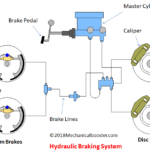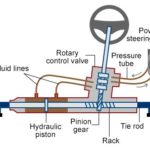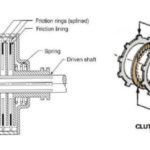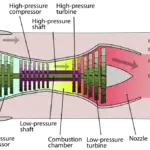1. Introduction
Air is a fluid that Exerts Force on the Object through which it passes. The Force, termed Aerodynamic drag, is created due to the Pressure difference between the front and rear parts of the Object. This is the theory that led to the development of Aerial vehicles. This article will discuss one of the most widely used Aerial vehicles, the Airplane, in detail. It is essential to Understand the Lift and drag Forces before knowing the Airplane flight mechanism. In this article, we will be covering the Topic of Flight Dynamics and Flight Control systems that will help in better understanding the Mechanism of How does an airplane fly?
2. Introduction to Airplanes and its History
An Airplane is defined as a fixed-wing aircraft propelled by the Thrust of an Engine (Mostly Jet Engine). It is a type of Aerial vehicle that works on the principle of Lift and Drag force. The Air flowing through it Induces a Lift, which takes the Airplane Upwards, and the Thrust from the Engine drives it Forward.
The History of the Airplane takes us a long time back when there were no modern technologies available, and Earth was considered the center of the Universe. This was when the development of Aerial vehicles, such as Leonardo da Vinci’s, the Ornithopter, Hot Air Balloon, Etc, took place. It was the Idea from these Inventions, which led to the development of the first Airplane in 1905. The Credit for the Development of First Human carrying Airplane goes to Wright Brothers, who have Invented the Vehicle that can take a person on the Flight. In the Final Flight of the test, the Airplane covered 850 Feet in 59 seconds. The Invention was Important from the Aspect that People start believing that Human can also fly, and development in the field of Science and Technology Starts taking place.
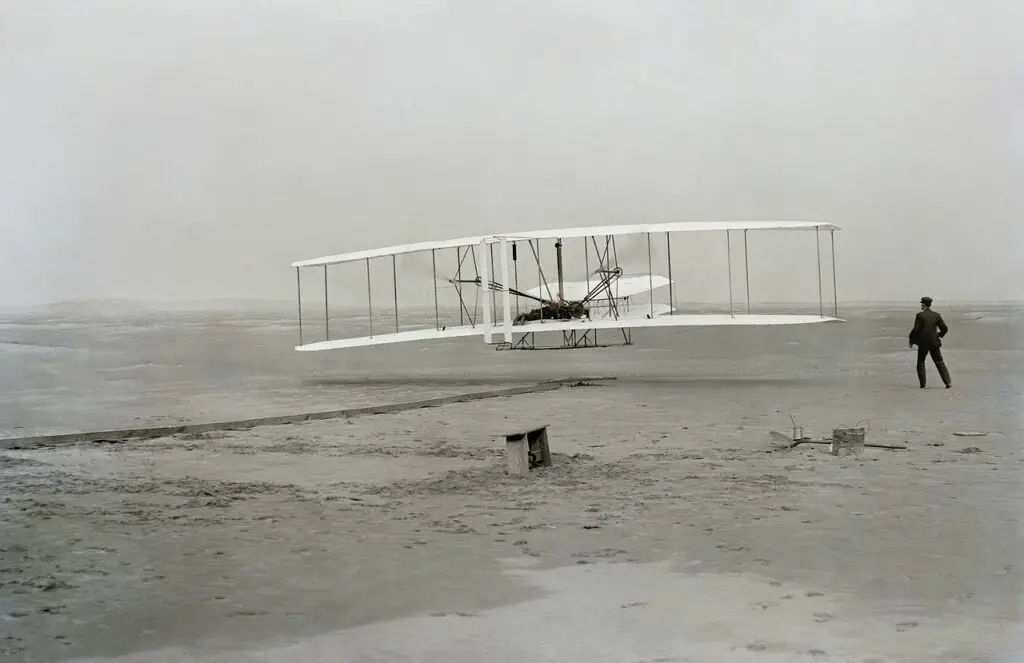
Fig.: Wright Brother Airplane
3. Parts of Airplane
Airplane consists of Several components, which are explained as below:
a). Fuselage:
The Body of the Airplane is called the Fuselage. It consists of a Hollow Circular Tube and a set of wheels called Landing gear. There are two wheels present on both sides of the Fuselage, and the operation of brakes is the same as in the Automobile. Most landing gear can be folded inside the Fuselage during the flight and taken out during landing.
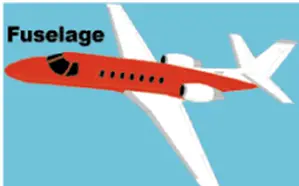
Fig.: Fuselage
b). Engine:
The Engines are provided on either side of the Airplane, attached to the Fuselage. They are mostly Jet Engines, that Provides the Forward thrust to the Vehicle. The Jet Engine works on Combustion process, consists of Turbine and Compressors to Burn the fuel-Air Mixture to take the Vehicle Forward.
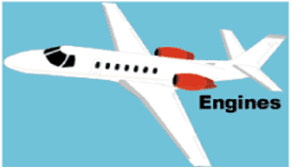
Fig: Engines
c). Wings:
The Wings are attached to the Fuselage, which provides the lift to the vehicle. More the Surface area of the Wings more will be the Lift force Induced. The Shape of the wings is designed in such a way that when Air passes through it, a large Amount of Lift force is generated.
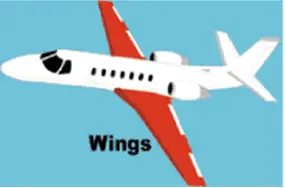
Fig: Wings
d). Flaps:
The Flaps are present on the Wings of the Airplane. They are provided to Increase the total Surface area of the Wing to increase the lift force. They flap sidewise and back to increase the effective Surface area of the Wing.
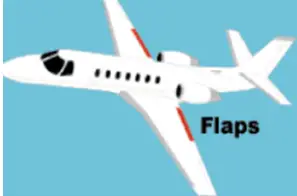
Fig: Flaps
e). Ailerons:
This Component helps in turning the vehicle in the flight. They are pushed down to move the air downward and make the Wings tilt Up, which helps turn Airplane in the desired direction.
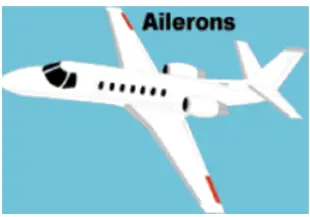
Fig. 6:Ailerons
f). Tail:
The Tail consist of an Elevator and Rudder. The Rudder moves left and right, to control the Left and right movement of the Plane. The Elevator can be pushed Upwards or downwards to change the direction of the Airplane nose.
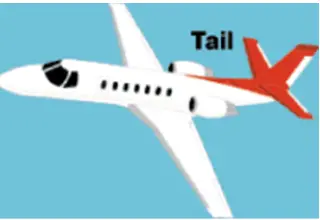
Fig: Tail
Also Read:
- Types of Braking System in Automobile
- What are Different Types of Turbine?
- How Automatic Transmission Works? – Best Explanation Ever
4. Lift and Drag Forces on Airfoil
Airfoil is a shape that is taken as reference in the design of any Aerial vehicle. The Shape of Airfoil depends on certain parameters that are defined in various Conditions. The Figure below represents an Airfoil generated in Solidworks.
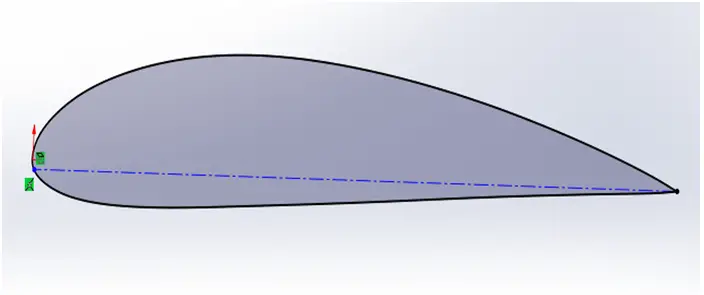
Fig:Airfoil Shape
The Shape of the Cross-section of the Airplane Wings are of the Airfoil. The Shape is selected because, it generates a large amount of Lift force when kept at an angle with the Horizontal Axis. The Overall Shape of the Wings of the Airplane is shown as below:
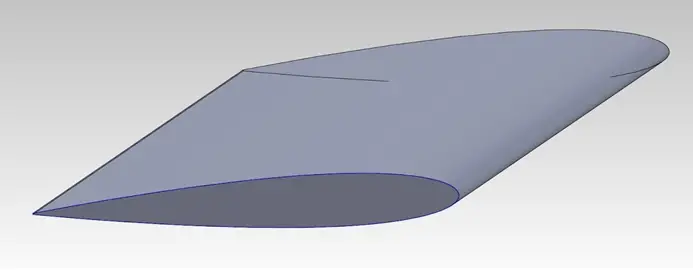
Fig: Wing of an Airplane
Airfoils are the frequently used shape in the field of aerial vehicles, and they can be of different shapes depending upon different Conditions. Hence, NACA has assigned a naming convention for all types of Airfoil for its ease of use.
Link for the NACA Naming Convention: Click this Link to Know more
When Air passes through Airfoil, it generates lift and Drag Forces. When the Object is Parallel to the direction of Air, it will create no Lift force. The Object is needed to be elevated to create a lift and make the Vehicle fly. The Angle of Elevation provided is called Angle of Attack. It is to be remembered that Lift and Drag forces are always Perpendicular to each Other
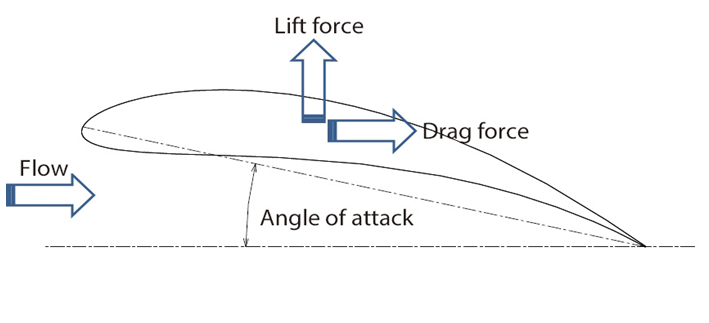 Fig: Lift and drag force on Airfoil
Fig: Lift and drag force on Airfoil
The Drag and Lift forces can be Quantitatively calculated by the following formulas:
 Where,
Where,
- Fd, Fl are the Drag and Lift forces respectively
- Cd, Cl are the Coefficient of Drag and Lift respectively
- Af= Frontal Area of the Object
- As= Surface area of the Object
- V= Inlet velocity
5. Flying Mechanism of Airplane
When a Person gets a clear Understanding of Airfoil, Lift, drag force, and Contribution of Angle of Attack, the Airplane’s Working can be easily Understood. The Flying Mechanism of Airplane can be divided into the following two Parts:
a). Lifting of the Airplane:
The Airplane contains the Wing, which is an Airfoil in Shape. The vehicle runs at the runway, parallel to the direction of the flow of Air. When the vehicle gains a certain velocity, the landing gears’ height is Increased, and Hence, an Elevation is provided at the Nose. This Elevation creates an Angle of attack, and the vehicle is no Longer Parallel to the direction of the Flow of Air. When the Lift force generated, due to the Angle of attack, overtakes the Weight of the vehicle, and Airplane lifts upward.
To know more about the Lifting Mechanism of the Airplane. Watch the video…
b). Traveling Forward:
The Lift to the vehicle is provided by the Lift force generated, but it can’t take the vehicle ahead. The Jet Engine Installed at both ends takes the vehicle forward by Providing a thrust force. When the value of Thrust force overtakes the Value of Aerodynamic drag, the vehicle starts moving forward. Jet Engine Contains a Turbine and Compressor, which provides energy for the combustion of an Air-fuel Mixture, and Hence, a thrust force is created.
To know more about How Jet Engine Works. Watch the Video…
The Mechanism of Lifting and Moving forward involves the following forces:
- Lift Force
- Weight
- Aerodynamic drag
- Thrust force
- Lift force Produced > Weight of the Airplane, then the Airplane will move Upward. This is called Lifting Condition
- Thrust force Produced > Aerodynamic drag, then the Airplane will move Forward. This is called as Moving Forward Condition.
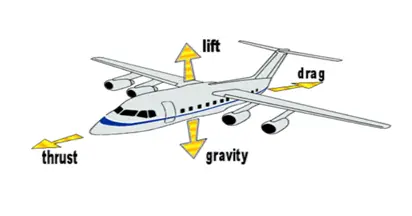
Fig: Forces on the Airplane
6. Control of Flight of plane
A Vehicle in a flight does not travel only in the forward direction, but it needs to turn. The Control of flight is important to Control the Overall flight dynamics of the Airplane, and provides a Safe and Comfortable ride.
Following are the Parameters that are controlled during the flight of an Airplane:
- Lift or Height of the Airplane from the Ground, commonly referred to as Altitude.
- Speed of the Airplane moving forward.
- Turning Mechanism of the Airplane during flight.
The Power of the Engine, and hence its Acceleration is controlled by the Throttle. The Pilot pushes the throttle and it takes the Airplane forward.
The Altitude of the Airplane is Increased or decreased with the Help of Elevator, present at the tail of the Airplane. The Elevator is controlled by the Control Wheel, present at the Drive cockpit. The Pilot raises or lowers the elevator, making it go down or move upward.
The Rudder and Ailerons are used together to turn the Airplane. The Pilot raises and lower the Ailerons to roll the Airplane in either direction. The Rudder controls the Yaw motion, and together with Ailerons helps in turning the Airplane.
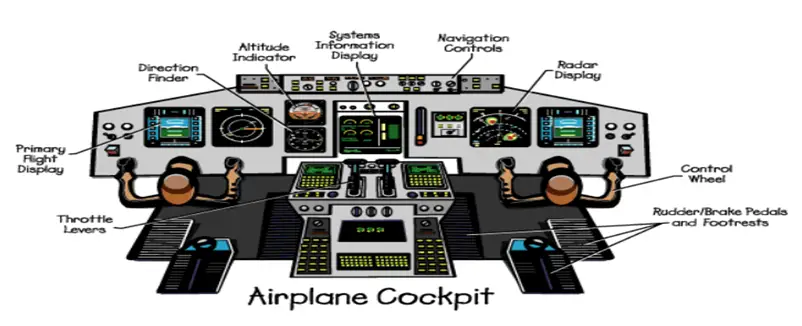
| S.no. | Type of Motion of the Airplane | Control Devices used |
| 1 | Lifting of the vehicle | Elevator |
| 2 | Speed of the Vehicle Moving forward | Throttle |
| 3 | Turning of the vehicle during flight | Rudder and Ailerons |
7. Crossing the Sounds Barrier:
When an Airplane travels in air, it travels at certain speed, against the air molecules. Sound is made up of molecules of air, that are moving. If an Airplane crosses the Sound barrier, a Phenomenon takes place, called a Sonic Boom, which creates a Loud noise. The Sound is produced because, air waves gather and compresses the air in the front of Airplane and make it move forward. The Phenomenon of Shock wave and Sonic boom can be Understood with the Help of Mach Number. It is defined as,
Ma = V/Vs
Where,
- Ma = Mach number
- V= Velocity of the Airplane
- Vs= Velocity of Sound in Air
We can categorize the Shock wave characteristics of the Airplane moving in the air, as follows:
| S.no. | Mach number | Category | Example |
| 1 | Less than 1 | Subsonic | Boeing 747 |
| 2 | Equal to 1 | Sonic | Concorde |
| 3 | 1 to 5 | Supersonic | Concorde |
| 4 | 5 to 10 | Hypersonic | Space Shuttle |

Fig: Shock wave formation
8. FAQs:
Q1: Why the Force produced by the Engine is called Thrust force?
Ans: The Force Produced by the Engine, that do the work involves the Flow of mass in and out of the System. This force is called as thrust force.

p = Momentum
ma= Newtonian force
v*dm/dt = Thrust force
Q 2: What is Pitch and Yaw?
Ans: Pitch is the movement of the Airplane either upwards and downwards. Yaw is the movement of the Airplane leftwards or rightwards.
8). References:
Image Source
https://www.grc.nasa.gov/www/k-12/UEET/StudentSite/dynamicsofflight.html



